Disclosure: This article contains affiliate links. We may earn a commission from purchases at no extra cost to you, which helps our travel content.
The morning call to prayer echoes across Casablanca as I sip mint tea on a rooftop terrace, watching the city awaken. Most travelers see Casa as merely a gateway to Morocco's more famous destinations—Marrakech, Fes, Chefchaouen. They spend a day photographing Hassan II Mosque before moving on, missing the pulse of this vibrant coastal metropolis. As a former detective, I've learned to look beyond the obvious, to find stories hiding in plain sight. And Casablanca? Tiene muchos secretos—it has many secrets. After spending three weeks investigating its lesser-known corners, I've uncovered adventures that reveal the true character of this multifaceted city and its surroundings. Perfect for couples seeking both connection and exhilaration, these experiences offer a blend of cultural immersion and adrenaline that you won't find in standard guidebooks.
Paragliding the Atlantic Coast
The wind whips my jacket as I stand atop the cliffs at Tamaris, about 20 kilometers south of downtown Casablanca. Below me, the Atlantic crashes against jagged rocks, sending spray skyward in explosive bursts. My instructor Mohammed checks my harness one final time.
'Ready, detective?' he jokes, knowing about my former profession.
I nod, heart pounding. Three steps forward and suddenly—we're airborne, the thermal lifting us high above the coastline. From this vantage point, Casablanca reveals itself in ways impossible from the ground. The massive Hassan II Mosque appears as a jewel set against the azure sea. The sprawling medina becomes a labyrinth of terracotta and white. But it's the contrast that captivates me—ancient neighborhoods butting against gleaming high-rises, tradition and modernity in constant negotiation.
For nearly forty minutes, we ride the coastal thermals, occasionally dipping low enough to feel the ocean spray. Mohammed points out landmarks: the abandoned El Hank lighthouse, the wild beach of Ain Diab where locals escape the summer heat, the distant outline of the Casablanca Cathedral.
'Most tourists never see Casa like this,' Mohammed says as we bank toward our landing zone. 'They miss the true face of the city.'
Paragliding companies operate year-round, but spring offers the perfect balance of steady winds and clear visibility. I booked with Atlantic Air Adventures, a small outfit run by former Moroccan Air Force pilots who know these skies intimately. At 800 dirhams (roughly $80) per tandem flight, it's an affordable luxury that yields priceless perspectives.
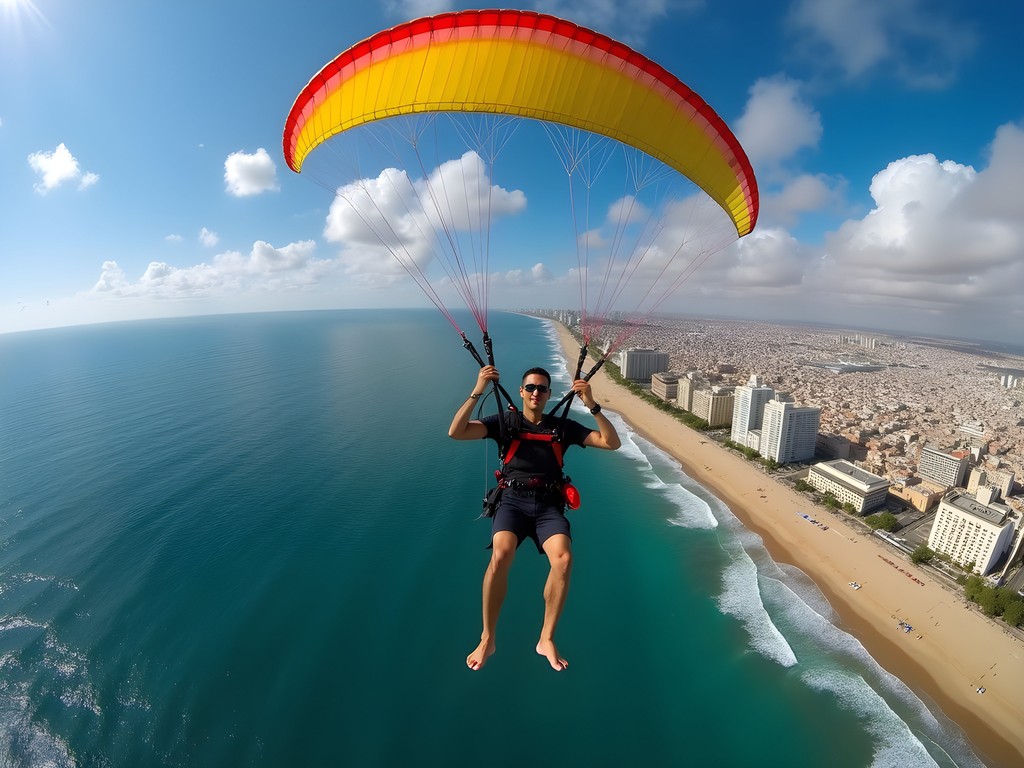
💡 Pro Tips
- Book paragliding tours at least 3 days in advance as they often fill up quickly
- Morning flights typically have the best wind conditions and clearest views
- Wear closed-toe shoes and bring a light windbreaker for the flight
Excavating Ancient Anfa
Few visitors realize they're walking on layers of history when they stroll through Casablanca. Beneath the art deco facades and modernist structures lies Anfa, the Berber settlement that predated the Portuguese arrival in the 15th century.
I meet Youssef, an archaeologist with the Moroccan Heritage Foundation, at sunrise in the Anfa neighborhood. Today's urban landscape—luxury villas and upscale cafes—betrays little of its ancient origins. But Youssef has special access to an active dig site hidden behind unassuming walls.
'Most of Casablanca's pre-colonial history was paved over,' he explains as we descend into a rectangular pit. 'But here, we've uncovered remains dating back to the 8th century.'
The excavation reveals stone foundations, pottery fragments, and occasionally, artifacts that speak to daily life in medieval Morocco. As someone who once tracked stolen pre-Columbian artifacts across state lines, I find myself instinctively cataloging details—the distinctive red clay of a pottery shard, the geometric patterns on bone fragments, the unmistakable green patina of ancient copper.
'You have good eyes,' Youssef notes as I spot a small coin nestled in the dirt wall. 'The detective never stops detecting, no?'
For history enthusiasts, this hands-on archaeological experience offers something far more valuable than typical tourism—connection with Morocco's layered past. The foundation offers small group tours twice weekly (reservation required), and for those willing to commit a full day, you can participate in the actual excavation work under expert guidance.
After our dig, I document my findings in my travel journal, which has become an indispensable companion for recording observations and sketching artifacts. The acid-free pages preserve my notes perfectly, even in Morocco's sometimes humid coastal climate.

💡 Pro Tips
- Reserve archaeological tours at least 2 weeks in advance through the Moroccan Heritage Foundation
- Wear clothes and shoes you don't mind getting dirty if participating in excavation
- Bring a small brush (makeup brushes work well) if you want to help clean artifacts
Desert Expedition to Tamaris Dunes
Just 30 kilometers south of Casablanca's bustling center lies a landscape that feels transported from another world—the Tamaris sand dunes. This miniature desert ecosystem stretches along the coast, creating a surreal juxtaposition of golden sands against the deep blue Atlantic.
'Most people think you need to go to the Sahara for desert adventures,' says Karim, our guide, as he helps my partner adjust her hiking sandals. 'But we have our own little desert right here.'
The Teva sandals prove perfect for this terrain—secure enough for hiking but easy to shake free of sand, unlike my boots which quickly become uncomfortable sand reservoirs. I make a mental note to pack these on future desert excursions.
Our day-long expedition begins with dune boarding—essentially snowboarding on sand. After a few spectacular wipeouts (and mouthfuls of sand), I find my balance, carving down the slopes with increasing confidence. The rush is addictive, each run faster than the last.
After lunch in a Berber tent, we mount camels for a sunset trek along the coastline. The gentle sway of camel-back travel lulls me into contemplation as we pass abandoned bunkers—remnants of World War II coastal defenses that now serve as canvas for local graffiti artists. The juxtaposition is striking: ancient mode of transport passing modern ruins, all against the backdrop of Africa's northwestern edge.
'These dunes move every year,' Karim explains. 'They're slowly swallowing the forest to the east. Nothing stays the same here.'
As the sun dips toward the horizon, we dismount to explore tide pools teeming with life—sea urchins, translucent crabs, and colorful anemones. The detective in me can't help but investigate each miniature ecosystem, each pool a mystery of interdependence and adaptation.
The expedition culminates with mint tea at a local fisherman's home, where we feast on fresh-caught sea bass grilled over open flames. Under stars unpolluted by city lights, we listen to Gnawa music played on traditional instruments, the hypnotic rhythms completing our journey beyond Casablanca's urban boundaries.
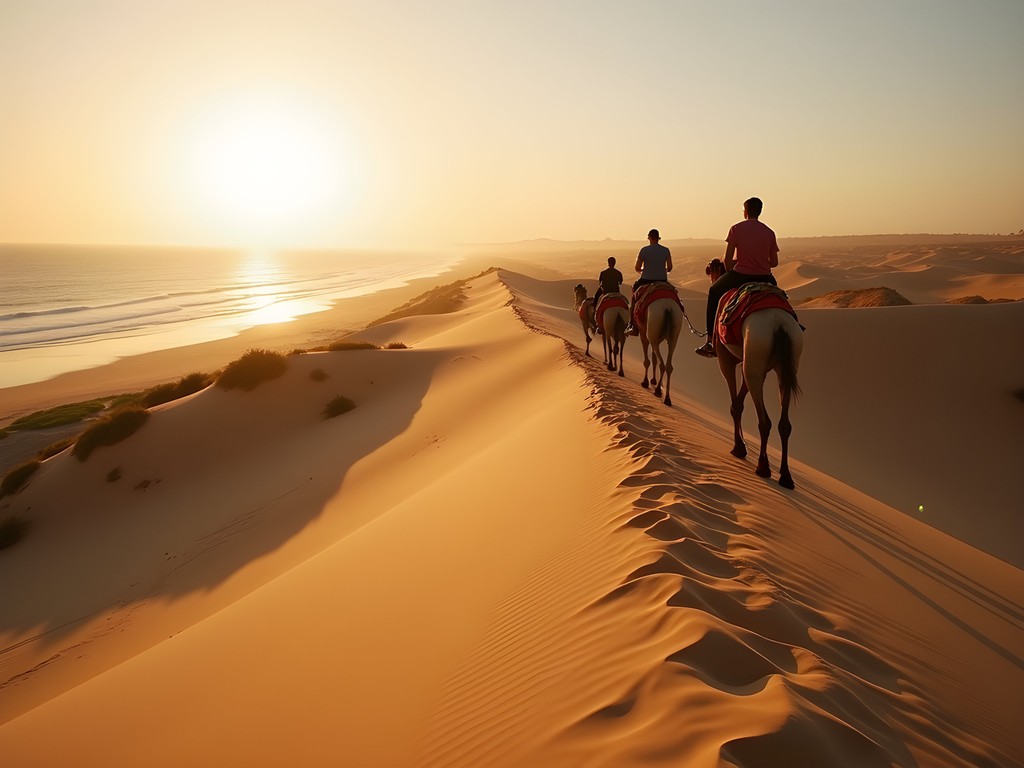
💡 Pro Tips
- Book desert expeditions through local operators like Morocco Eco Adventures rather than hotel concierges
- Apply sunscreen repeatedly throughout the day, even in spring the sun is intense
- Bring a scarf to protect against occasional sand gusts, especially in afternoon winds
Rock Climbing at Oued Cherrat
The gorge of Oued Cherrat cuts through the landscape like a scar, its red limestone walls rising dramatically from a riverbed that runs dry most of the year. Located about 45 minutes south of Casablanca, this hidden climbing paradise remains largely unknown to foreign visitors, though local climbers have been developing routes here for decades.
'We have over 200 routes now,' explains Fatima, my climbing guide and one of Morocco's few female certified instructors. 'From beginner to... well, crazy.'
I opt for something in between. Though I've climbed in Guatemala and Peru, the unique rock composition here presents new challenges. The limestone features pockets and sharp edges rather than the volcanic handholds I'm accustomed to.
Fatima leads us through progressively more difficult climbs, each offering a different perspective of the gorge. By midday, we're halfway up a multi-pitch route called 'Berber Dreams,' the city and ocean visible in the distance, the gorge stretching below us like an ancient text waiting to be deciphered.
'Look there,' Fatima points to faint red markings on an overhang near our anchor point. 'Prehistoric paintings. Maybe 5,000 years old.'
I examine the faded ochre designs—stick figures hunting what appears to be gazelle. My investigative instincts kick in as I photograph and sketch them in my notebook, comparing them to similar paintings I'd seen in Morocco's Atlas Mountains.
'Not many climbers notice these,' she says. 'You have detective eyes.'
After six hours of climbing, muscles pleasantly fatigued, we hike back to the base via a shepherd's path that winds through argan trees and flowering cacti. A local family invites us to share mint tea and fresh bread dipped in argan oil—hospitality that feels especially earned after a day on the rock.
For climbers, I recommend contacting the Casablanca Alpine Club for guides. Even experienced climbers should hire local expertise for their first visit, as route information is limited and approach trails can be confusing. My climbing shoes performed admirably on the limestone, though next time I'll bring a stickier rubber for the more technical routes.
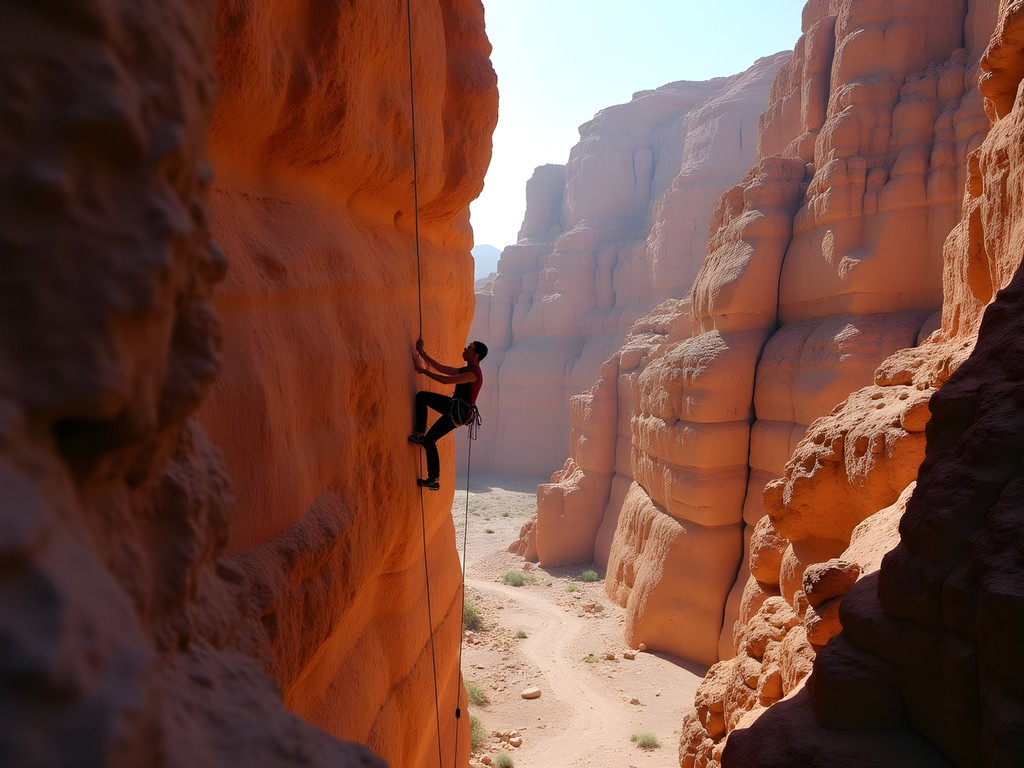
💡 Pro Tips
- Contact guides at least a week ahead through Casablanca Alpine Club (they respond slowly to emails)
- Spring climbing offers ideal temperatures—summer is too hot for the south-facing walls
- Bring twice as much water as you think you'll need; there are no services at the crag
Urban Exploration: Abandoned Art Deco
Casablanca boasts the world's second-largest collection of Art Deco architecture after Miami, but while some buildings have been lovingly restored, others lie abandoned—forgotten relics of French colonial ambitions and post-independence transitions.
My fascination with these spaces stems from both aesthetic appreciation and investigative curiosity. Each abandoned building tells stories of economic shifts, political changes, and cultural evolution. With my headlamp secured (essential for exploring darker interiors safely), I meet Mehdi, an architectural historian who moonlights as an urban exploration guide.
'We're not breaking in,' he clarifies as we approach our first site, the former Banco Estado building. 'We have permission from owners or caretakers. These are documented visits.'
The building's facade—once gleaming white with geometric motifs—now wears a patina of pollution and neglect. Inside, though, time has frozen in the 1930s. Marble counters where colonial officials once conducted business. Brass fixtures tarnished to deep brown. Geometric stained glass windows casting colorful shadows across dusty floors.
Throughout the day, we explore five abandoned structures—each with its own character. The former Cinéma Rialto, with its crumbling projection room still containing fragments of film. A hammam where ornate tilework now hosts colonies of pigeons. An apartment building where a single room contains hundreds of handwritten letters, abandoned mid-correspondence when the French owners fled post-independence.
'I document everything,' Mehdi explains, photographing a particularly beautiful ceiling medallion. 'Before developers gut these places or they collapse from neglect.'
This isn't urban exploration for thrill-seeking. It's cultural preservation through documentation—something that resonates deeply with my own mission to record disappearing traditions. We take nothing but photographs, leave nothing but footprints, yet gain invaluable insights into Casablanca's architectural heritage.
For couples interested in this experience, Mehdi offers small-group tours through the Casamémoire organization, though he cautions: 'This isn't for everyone. You need comfort with dust, stairs, and occasionally, the melancholy of abandoned places.'

💡 Pro Tips
- Book architectural exploration tours through Casamémoire at least 5 days in advance
- Wear closed shoes with good traction—floors can be slippery with debris
- Bring a bandana or mask for dusty buildings if you have respiratory sensitivities
Coastal Kayaking to Hidden Caves
The Atlantic coastline north of Casablanca hides secrets that can only be accessed from the water. After hearing whispers of sea caves containing ancient inscriptions, I arrange a kayaking expedition with Océan Aventures, a small outfitter based in the fishing village of Dar Bouazza.
'The ocean is different every day,' warns Hassan, our guide, as we prepare our tandem sea kayaks at dawn. 'Today she seems calm, but always respect her power.'
The morning light paints the water gold as we paddle away from shore, our small fleet of four kayaks following the rhythmic rise and fall of gentle swells. About two kilometers offshore, Hassan signals toward a seemingly solid cliff face. It's only as we draw closer that I notice the narrow opening—a sea cave entrance barely visible against the dark rock.
'Time it with the waves,' he instructs. 'Three, two, one... paddle hard!'
We surge forward on a swell, ducking as we enter the cave. Inside, the temperature drops immediately. Emerald water illuminates the cavern from below while a small opening in the ceiling creates a spotlight effect on the far wall. And there—just as promised—faint red markings cover a section of smooth rock face about two meters above the waterline.
'Phoenician,' Hassan explains. 'They used these caves for shelter and perhaps religious ceremonies. The markings might be 3,000 years old.'
My detective instincts kick in as I photograph the symbols from our gently rocking kayak. Some resemble constellations, others abstract human figures. I sketch them in my waterproof notebook, making mental connections to similar markings I've seen in coastal caves in Peru.
We explore three more caves throughout the morning, each with its own character—one hosts a colony of bats that swirl around us in harmless curiosity; another features a natural blowhole that erupts like a geyser with each large wave; the third opens into a hidden lagoon where we beach our kayaks to swim in crystalline water.
For lunch, we paddle to a secluded beach accessible only by water. Hassan prepares fresh sardines grilled over driftwood while we explore tide pools teeming with marine life—sea urchins, anemones, and tiny octopi that change color as they dart between rocks.
'Most tourists never see this coastline,' Hassan says as we watch fishermen hand-casting nets from small wooden boats nearby. 'They stay in the city, or they go straight to the desert. But the true Morocco? It's here too, where the land meets the sea.'
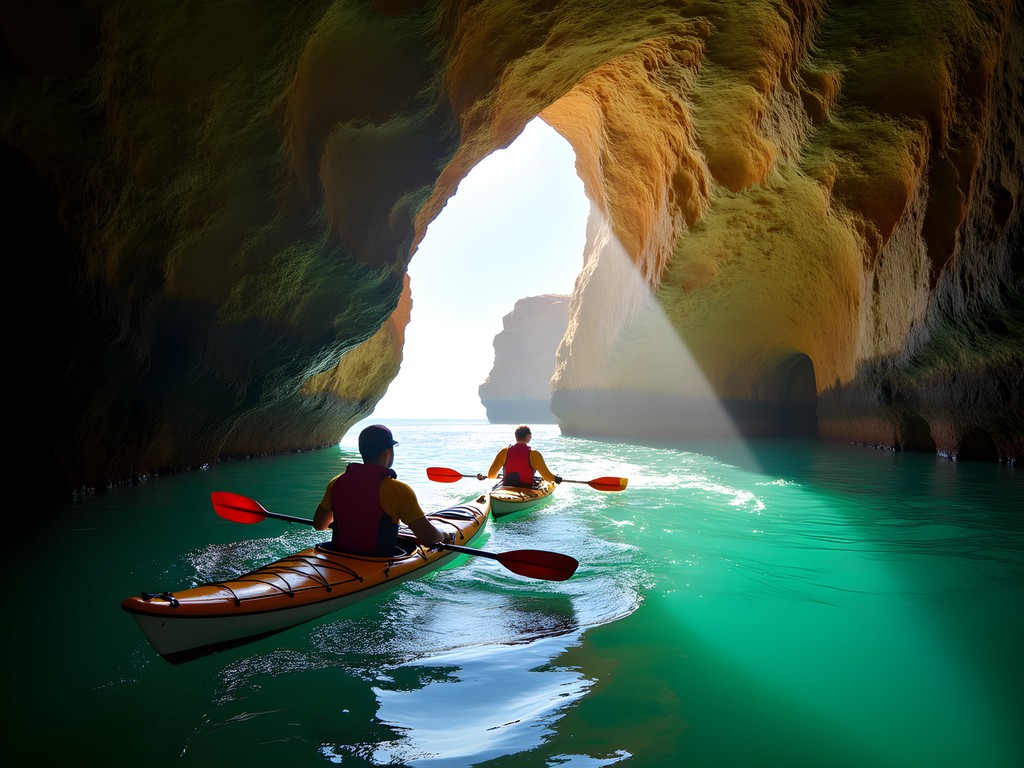
💡 Pro Tips
- Book kayaking tours 3-4 days in advance and confirm weather conditions the day before
- Bring a dry bag for cameras and phones—splashing is inevitable even on calm days
- Apply waterproof sunscreen before departure and bring a hat with a chin strap
Nighttime Souk Scavenger Hunt
As twilight descends on Casablanca, the central medina transforms. Daytime tourist stalls close while local markets—the real souks—come alive with activity. This is when Casablancans shop, socialize, and conduct the business of daily life away from the heat and tourist crowds.
I meet Zainab, a local culinary instructor, outside the walls of the old medina. Tonight's adventure: a culinary scavenger hunt through the nighttime souks, collecting ingredients for tomorrow's cooking class while experiencing the medina as locals do.
'Most tourists see our markets as photo opportunities,' Zainab explains as we enter the labyrinthine streets. 'But these are living, breathing economic ecosystems with traditions dating back centuries.'
She hands us a list written in both Arabic and English—fifteen ingredients ranging from common (preserved lemons, saffron) to obscure (specific varieties of wild thyme that grow only in Morocco's Middle Atlas mountains). The challenge: negotiate for each item in either basic Arabic (which I've been studying) or French, without revealing we're foreigners until after prices are agreed upon.
This isn't just entertainment—it's immersion in the economics and culture of Moroccan commerce. Each successful transaction teaches lessons about quality assessment, cultural etiquette, and the intricate dance of Moroccan bargaining, which isn't merely about price but about establishing relationship and respect.
We weave through narrow alleys where specific trades cluster together according to medieval guild traditions—the spice merchants in one section, leather workers in another, metalsmiths in a third. The sensory experience is overwhelming—the call of vendors, the scent of spices and grilled meats, the heat from bread ovens that have operated continuously for generations.
'Use your detective skills,' Zainab encourages as we search for a particularly rare ingredient. 'Observe who the locals ask for specialty items.'
Following her advice, I notice patterns in the crowd flow, tracking elderly women who clearly know the market intimately. They lead us to a tiny stall tucked behind a more prominent shop, where an ancient woman sells wild herbs collected from the mountains.
By evening's end, we've secured all fifteen ingredients, learned dozens of Arabic food terms, and experienced the medina as participants rather than spectators. The night culminates in a rooftop tea ceremony where we compare notes with other couples who joined the hunt, each team sharing stories of triumphs and humorous miscommunications.
For couples seeking connection—both with each other and with Moroccan culture—this evening adventure offers something rare: authentic interaction beyond the tourist experience, plus the shared accomplishment of navigating a complex cultural environment together.
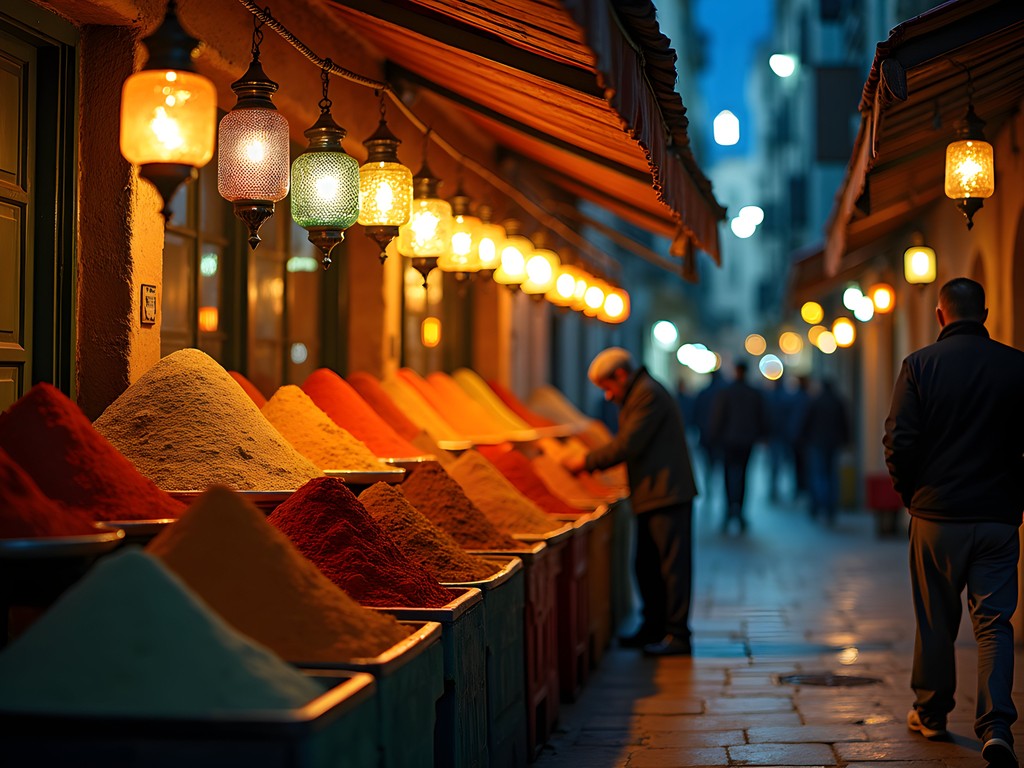
💡 Pro Tips
- Book the nighttime souk experience through La Maison Arabe cooking school at least 2 days ahead
- Bring small denominations of dirhams for easier negotiations
- Wear comfortable shoes and modest clothing that covers shoulders and knees
Final Thoughts
As my week of Casablanca adventures concludes, I find myself sitting at a café overlooking the Atlantic, watching fishing boats return with the day's catch. The Hassan II Mosque stands majestically to my left, but my gaze is drawn instead to the ordinary scenes unfolding around me—the complex choreography of daily Casablancan life. This city rewards the investigative traveler, the one willing to look beyond postcard attractions to discover authentic experiences. Like any good detective, I came seeking evidence of Casablanca's true character and found it not in tourist brochures but in sea caves and abandoned buildings, ancient ruins and nighttime markets. For couples seeking connection—with each other and with Morocco's living culture—Casablanca offers adventures that challenge, surprise, and ultimately transform. As we say in detective work: the most valuable discoveries are rarely where everyone else is looking. Hasta la próxima aventura, Casa.
✨ Key Takeaways
- Casablanca offers adventure experiences that rival Morocco's more famous destinations
- Spring provides ideal conditions for outdoor activities with moderate temperatures and smaller crowds
- Connecting with local guides unlocks experiences impossible to find through hotel concierges or large tour operators
📋 Practical Information
Best Time to Visit
March to May (spring) or September to November (fall)
Budget Estimate
$100-150 per day per person, excluding flights
Recommended Duration
5-7 days
Difficulty Level
Moderate
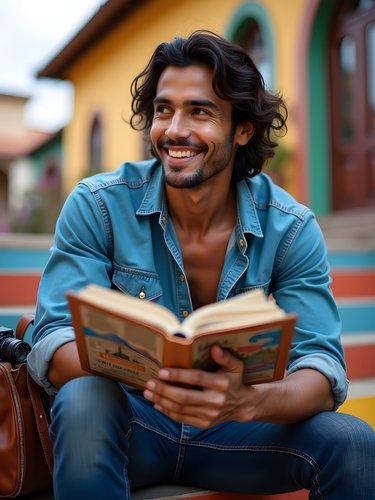
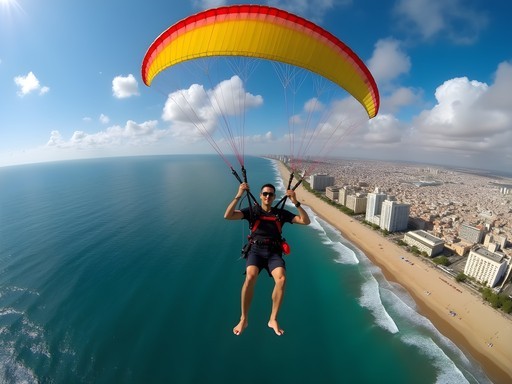
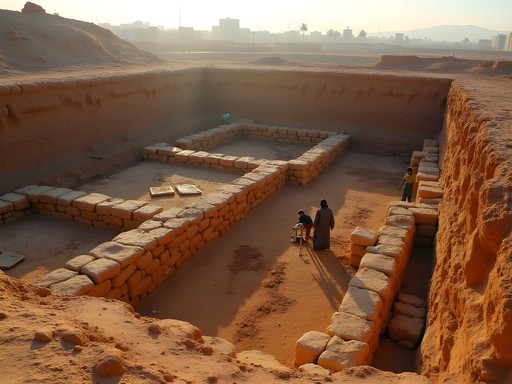
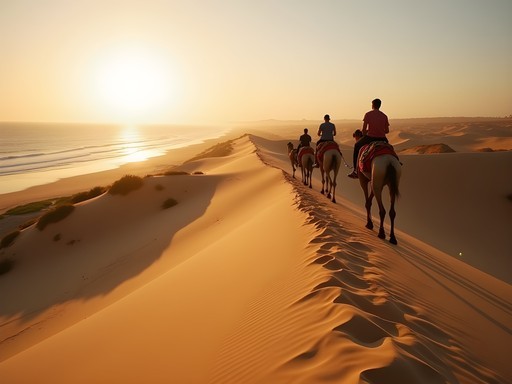
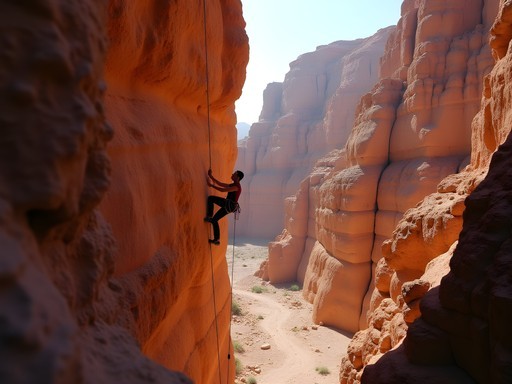

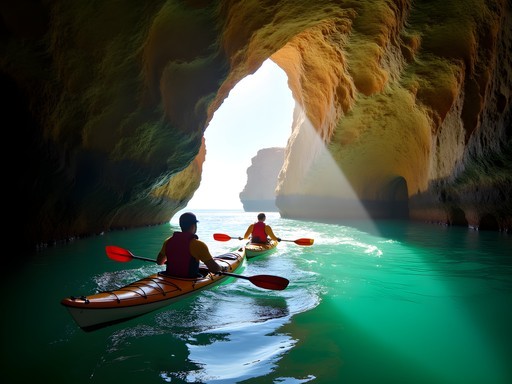


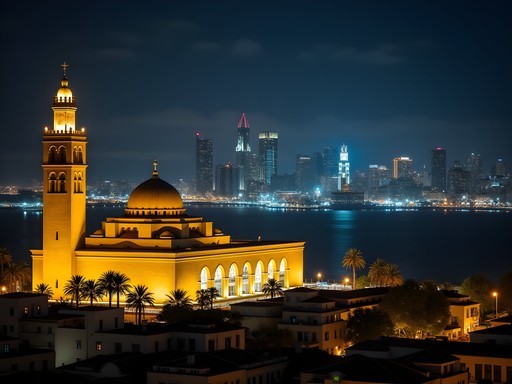
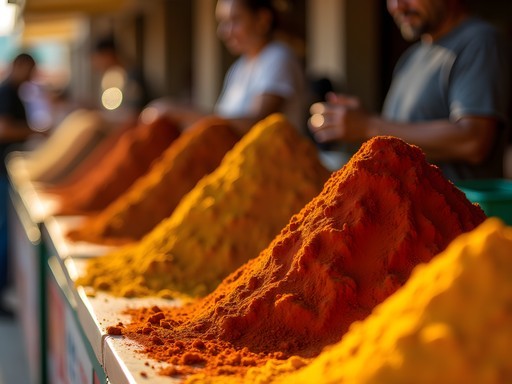
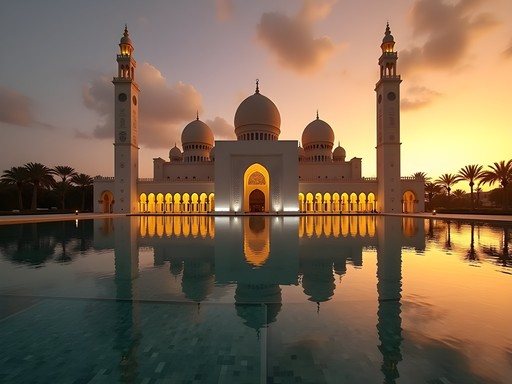
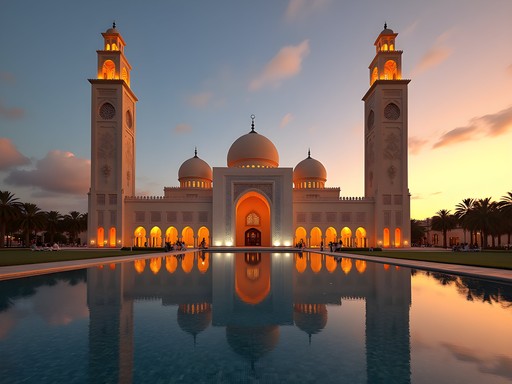

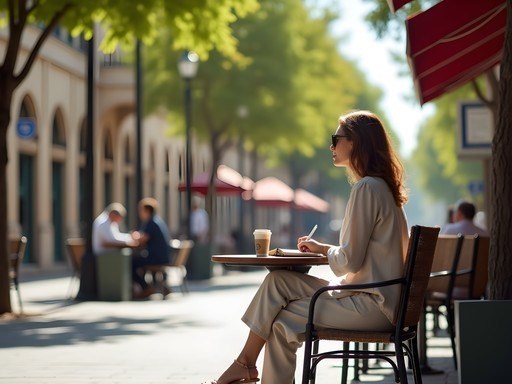


Comments
coolguy
Just booked my tickets to Morocco after reading this! Thanks for the inspo!
Jose McDonald
William! Dude! This post brings back memories! I did that exact same desert expedition to Tamaris last spring and it was EPIC. For anyone planning this trip: bring way more water than you think you need. The dunes are no joke, especially if you go for the sunset camel ride (which you absolutely should). Also, the excavation tour of Ancient Anfa has changed a bit - they now have an archaeologist-led option on Thursdays that gets you into areas regular tourists can't access. Worth the extra 100 dirham for sure!
travelgal
Going to Casa next month! How hard is it to get to those Tamaris Dunes without your own car?
redguy
We took a grand taxi there last year - about 200 dirham each way. Worth negotiating the price beforehand!
greenexplorer
Those photos of the Ancient Anfa ruins are incredible! How did I miss this on my trip??
vacationwanderer
How safe is the paragliding for total beginners? Planning a trip in October and it looks amazing but kinda scary too!
Jose McDonald
Did it last year as a complete newbie! It's tandem paragliding so you're strapped to an instructor who does all the work. Just make sure to book with Atlantic Fly - they're the safest outfit there. The views are INSANE and worth any nerves! I used my action camera to capture the whole flight and it's still my favorite travel video ever.
vacationwanderer
Thanks! That makes me feel way better about trying it!
Mason Sullivan
Just got back from Casa last month and can confirm these hidden gems are the real deal! We spent an afternoon at Oued Cherrat climbing and it was way less crowded than the popular spots near Marrakech. Tip for anyone heading there: the local guides at the base are actually better (and cheaper) than booking through hotels. We paid 300 dirham for a half-day with equipment included. Also found this amazing little seafood shack near the paragliding launch point - look for 'Chez Hassan' and order the fish tagine. Mind-blowing!
coolguy
Whoa never knew Casablanca had so much adventure stuff! Always thought it was just the movie and old buildings. Definitely adding that paragliding to my bucket list!
redguy
Same! I thought Casa was just a stopover city. Those Tamaris Dunes look insane!
coolguy
Right? Crazy how travel blogs open your eyes to stuff the guidebooks miss!
sunnyguide
How difficult was the hike to reach the paragliding launch point? Traveling with my mom (65) who's fit but not super athletic.
William Reyes
The main launch site is actually quite accessible - about a 10-minute walk from where the vehicles park. Your mom should be fine! There are more challenging spots for the adventurous, but the standard one is perfect for most visitors.
happywanderer
Just booked my flight to Casa! Can't wait to try that desert expedition!
adventurebuddy
How difficult was the rock climbing for beginners? Planning a trip with my girlfriend but we've only done indoor climbing.
William Reyes
They have routes for all levels! Make sure to book with Atlas Adventure Co - they offer beginner packages with instruction. The easier routes have amazing views too!
Venture X
Premium card with 2X miles, $300 travel credit, Priority Pass